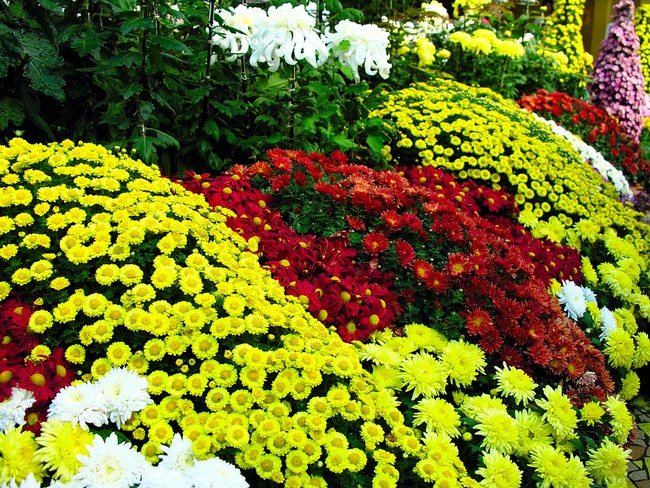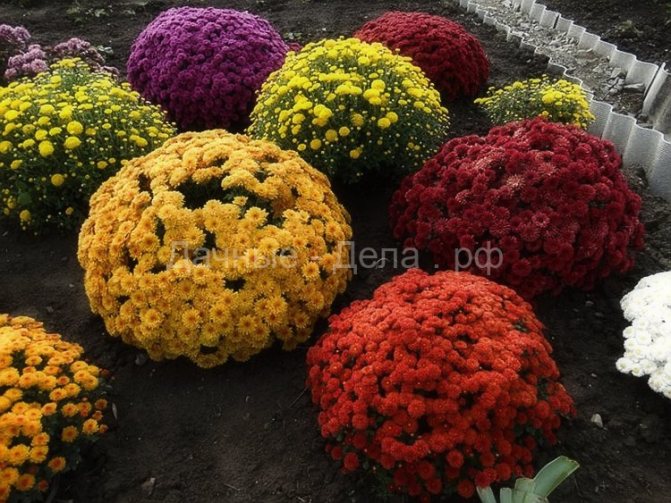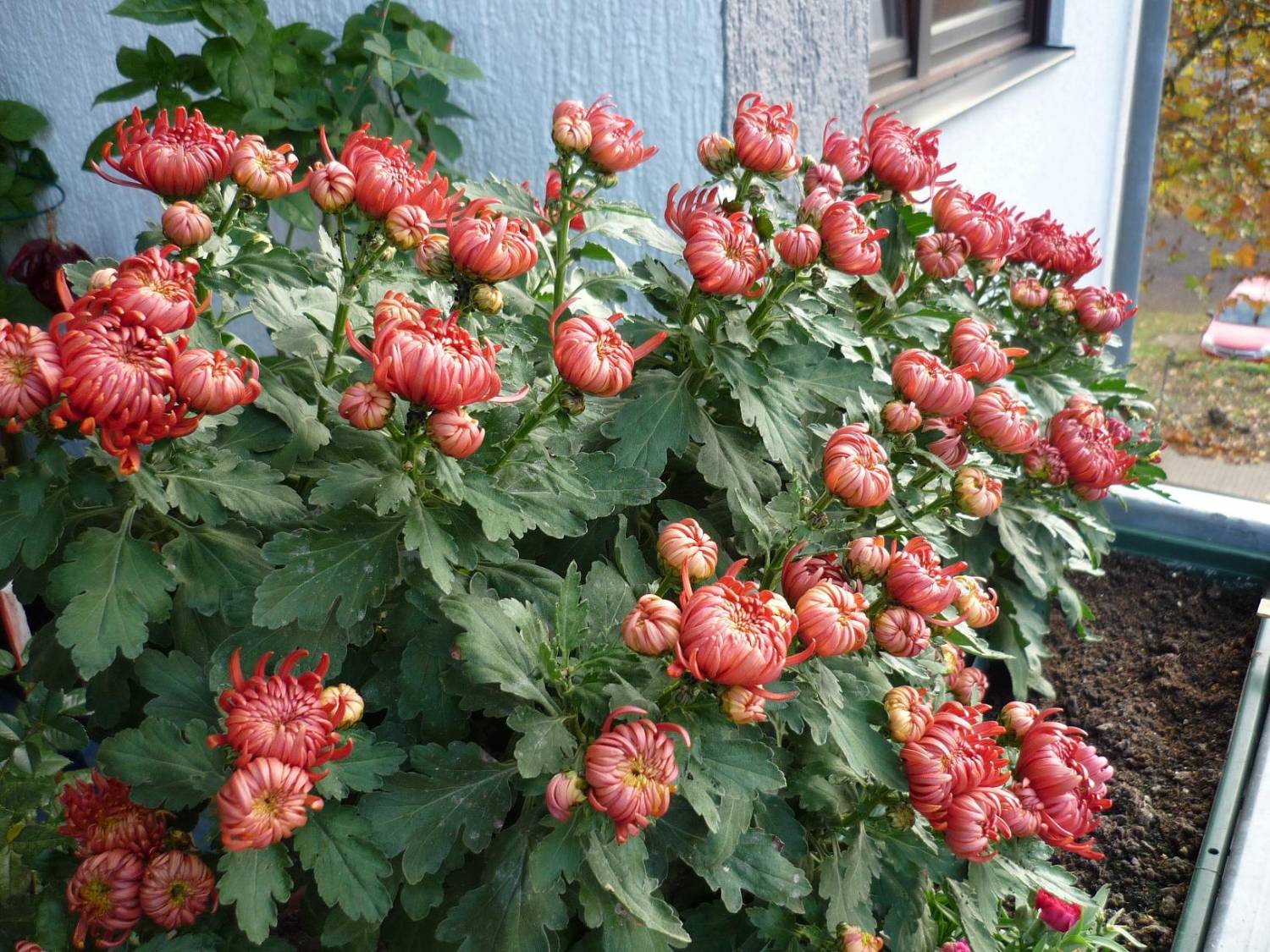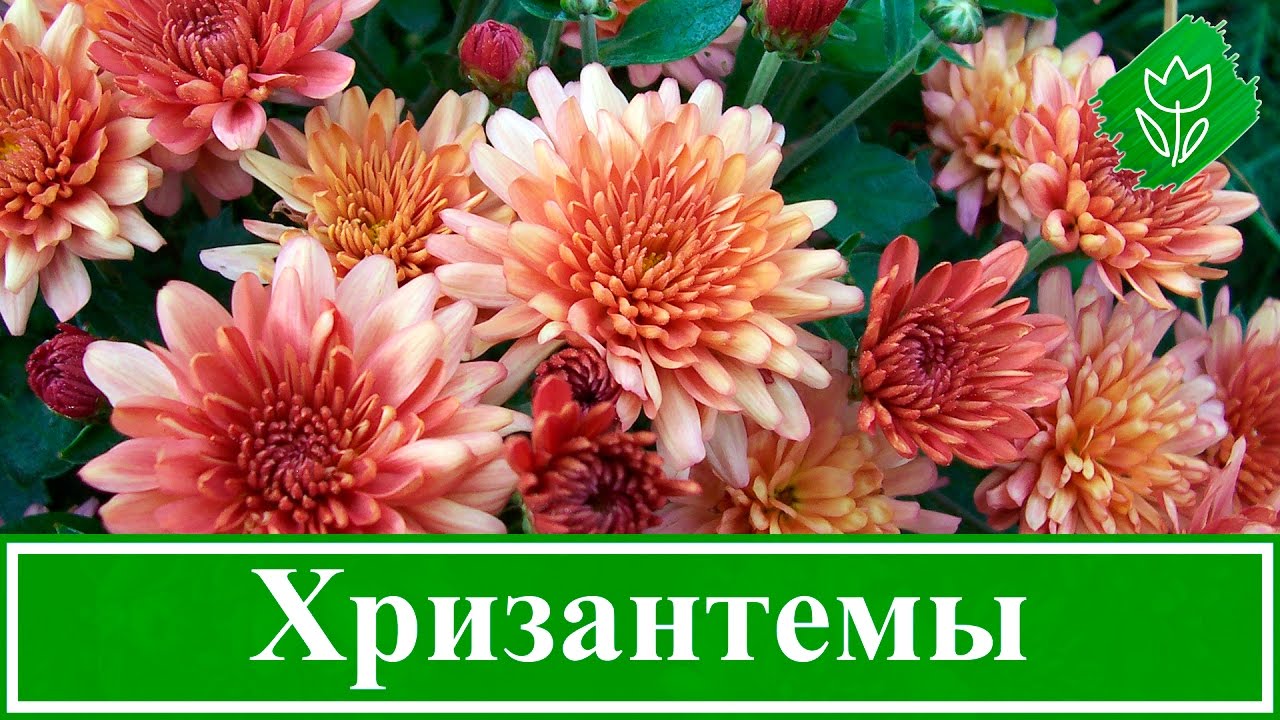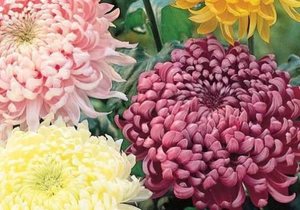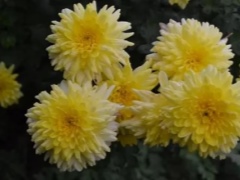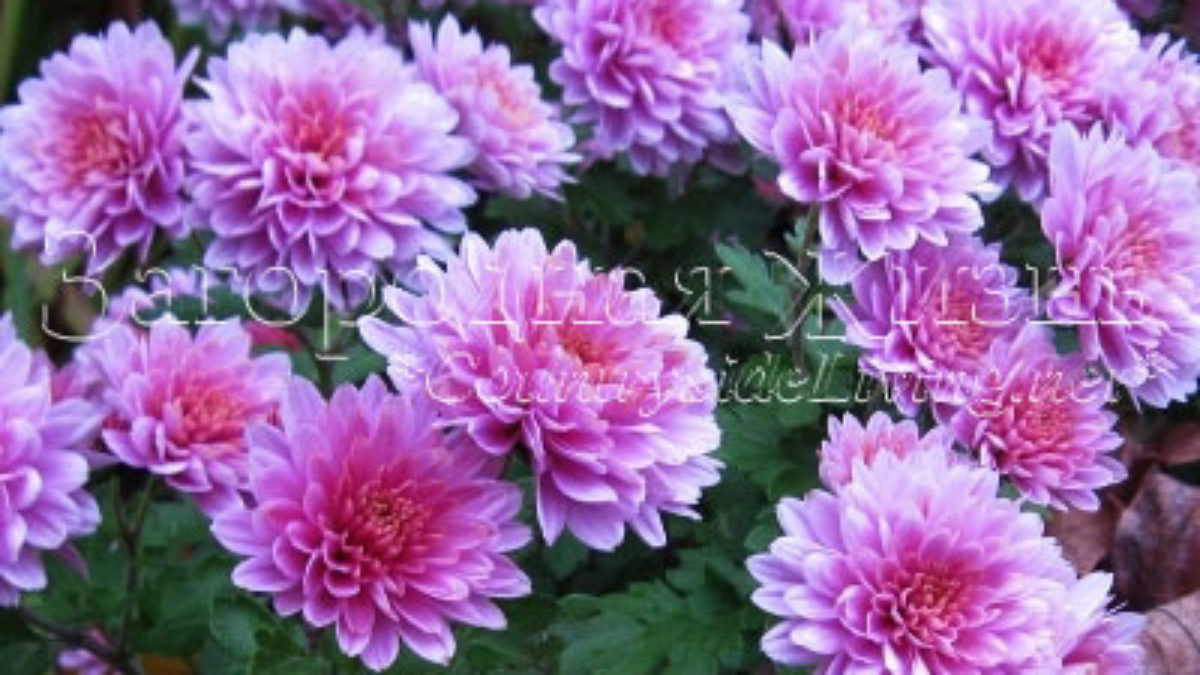Autumn care and preparation for winter
Chrysanthemums are loved by many and are happy to grow in their backyards. These are beautiful flowers that are suitable for bouquets and can stand in a vase for a long time. The plant tolerates cold well if the right shelter is prepared. There are varieties that cannot withstand even light frosts, but there are also relatively resistant to bad weather. Both require different care. Preparatory activities begin in the first or second decade of August. All of them can be divided into the following stages:
- dressing for ripening shoots and increasing cold resistance;
- removal of diseased and unnecessary parts;
- pruning;
- pest and disease treatment (if there are signs);
- shelter for a successful wintering.
Feeding rules
Top dressing is best applied in dry and warm weather. The optimal dates are mid and late August, and in the southern regions, mid and late September. The main thing is that the weather is warm enough, then the fertilizers will have time to be absorbed by the plants. It is not recommended to be late with feeding, otherwise they will be practically useless.
 In the autumn, the plant requires only phosphorus and potassium from minerals. They stimulate abundant flowering, and the flowers are lush and do not dry out for a long time. Plus phosphorus-potassium fertilizers are also that they have a beneficial effect on the root system, contributing to its strengthening. The plant that has received top dressing almost always winters well.
In the autumn, the plant requires only phosphorus and potassium from minerals. They stimulate abundant flowering, and the flowers are lush and do not dry out for a long time. Plus phosphorus-potassium fertilizers are also that they have a beneficial effect on the root system, contributing to its strengthening. The plant that has received top dressing almost always winters well.
It is not recommended to use nitrogen fertilizers in autumn. The flowers stretch upward, but they are greatly weakened. Building up the green mass, the chrysanthemum does not ripen. In winter, such specimens die.
Sanitary cleaning
This event is also called the autumn sanitation. It consists in removing all shoots and leaves that show signs of disease or damage by pests.
 It is better to play it safe, otherwise the infection will spread to the entire plant, and also affect neighboring bushes, even if they are still healthy in the fall. Not paying enough attention to chrysanthemums in September, in the spring the gardener pays for carelessness by having to treat the plantings with pesticides and insecticides. Rot is especially dangerous. Under cover, it spreads and damages aerial parts and roots. After winter, the chrysanthemum may be completely rotten.
It is better to play it safe, otherwise the infection will spread to the entire plant, and also affect neighboring bushes, even if they are still healthy in the fall. Not paying enough attention to chrysanthemums in September, in the spring the gardener pays for carelessness by having to treat the plantings with pesticides and insecticides. Rot is especially dangerous. Under cover, it spreads and damages aerial parts and roots. After winter, the chrysanthemum may be completely rotten.
Treatment against diseases and pests
- speckled mosaic (viral infection);
- septoria;
- gray rot;
- fusarium wilting;
- rust;
- powdery mildew.
Correct pruning of raspberries in the fall and preparing them for winter
Septoria and all the following diseases on the list are fungal. They are disposed of by spraying. For processing, choose a windless day when there is no rain, not in the morning or in the evening, but closer to lunch, otherwise the dew that falls will reduce the effect of processing to zero. The following drugs are used:
- solution of copper sulfate and laundry soap;
- colloidal sulfur;
- bordeaux liquid.
 All the bushes are sprayed, and not only chrysanthemums, but also other flowers. Preventive measures are also invaluable. So, chrysanthemums must be planted at a sufficient distance from each other so that the bushes are well lit and the air does not stagnate between them.
All the bushes are sprayed, and not only chrysanthemums, but also other flowers. Preventive measures are also invaluable. So, chrysanthemums must be planted at a sufficient distance from each other so that the bushes are well lit and the air does not stagnate between them.
It is recommended to treat gardening tools with a solution of potassium permanganate after each use. This will destroy pathogens of fungal infections and microscopic insect pests. Chrysanthemums need to be inspected regularly so that the problem can be detected in time. Pests that pose a danger:
- meadow bug;
- nematode;
- aphid;
- mite;
- worm.
The preparations "Aktara" and "Actellik" help from them, you can also try to spray with a strong soap emulsion, but such treatment does not always give an effect. The use of "Phosphamide" is effective against the nematode, and only healthy bushes are sprayed, and all diseased specimens are dug up, taken outside the territory and burned.
Storing chrysanthemums in winter
Wintering chrysanthemums in the ground
There are several options for keeping chrysanthemums in the ground in winter. Let's take a closer look at them.
1) Mulching chrysanthemums for the winter.
Suitable for frost-resistant varieties of chrysanthemums and snowy winters. Moreover, with
with the onset of the first frosts, the plant is huddled (they take sawdust, shavings, compost, humus, peat, etc.), and in severe frosts they cover it with spruce branches or simply branches and sprinkle it with dry leaves.
2) Construction of a shelter for chrysanthemums in winter.
This option is more reliable, especially if the winter is capricious. For
this fall, supports are placed around a bush or several bushes of chrysanthemums
(bricks are laid, for example), and a board is laid on top of them or
slate. Now all that remains is to put the covering material on top and
fix it. You can take the same spruce branches, or you can take materials
like Spundbond or Lutrasil. The main thing is that the shelter has
the ability to ventilate, otherwise the chrysanthemum in winter may die from
excess moisture.
3) Chrysanthemum wintering in trenches.
For this method, you should prepare from the end of summer or the beginning of autumn.
On an elevation (so that moisture does not accumulate), a ditch is bursting out
not less than half a meter. The bottom of the trench is covered with sawdust or pine needles. With the first
frost chrysanthemums are dug out together with a clod of earth and placed in
"Wintering" in dense rows. Planks should be placed on top of the trench, and
boards - cover with a material like dense polyethylene. Thus,
water will not enter the ditch. There is one peculiarity of this method -
chrysanthemums "wake up" early and in spring they are usually taken out with green
shoots.

How to store?
Some do not transplant chrysanthemums for the winter, but leave them in the garden, while others leave such plants in a pot. Both options are valid and possible. Everything will depend on several factors:
What are the winters in your area? If they are cold, then the soil layer probably freezes deep enough. Due to low temperatures, the root system may die, so in this case it is better not to risk it and take the plants home
Where is your site located? The first thing to look out for is whether the garden is protected from the winds. Although, with proper covering, the gusts will not damage the shoots, nevertheless the temperature will drop due to them.
In addition, strong winds can destroy the shelter, and then the chrysanthemums will freeze. The second important point is the relief of the site. If it is located in a lowland, then with the onset of spring and during a thaw, water will accumulate in the beds, and this can lead to debate and death of shoots. So the area (especially flower beds) should be flat.
What kind of chrysanthemums are you? They differ: while some can tolerate even frost perfectly, others can only withstand mild European winters, and die with a significant drop in temperature. The most frost-resistant are Korean hybrids, which are united by the common name "Dubok". This group includes a lot of varieties of different colors and sizes, but they all perfectly tolerate even cold winters. If you are not very knowledgeable, then be especially careful when buying, since garden chrysanthemums can be easily confused with capricious and thermophilic home ones. But the latter have larger leaves and larger lush flowers.
Placement in a basement or cellar
There are chrysanthemums that under no circumstances are able to winter outdoors. These include:
- specimens grown in greenhouse conditions;
- foreign breeding hybrids;
- large-flowered;
- multiflora.

... The bushes are carefully dug up, transplanted into wide pots and placed in a warm room for the whole winter. In the room, the flower feels good and does not take up much space.
Multiflora is planted in loose, fertile soil. It will not work to move it with a lump of earth, but if part of the garden soil remains on the roots, you do not need to dig it out on purpose. A layer of drainage material is poured at the bottom of the pot, which can be expanded clay, small pebbles, polystyrene or perlite. Fertile soil is poured on top, where you can add a little high-moor peat and washed coarse sand.
The bush is planted in a pot, the roots are straightened, the remaining space is filled with soil, watered and slightly compacted. They put it in a well-lit place and observe how the flowering occurs. When the inflorescences are dry, they are cut off, and then the flowerpots are placed in a cool place, for example, in the basement. Backlighting is not required at this time, but care must be taken that the temperature does not drop below 0 ° C.
Instructions for the use of the veterinary drug Catosal
The second storage method is simpler and suitable for novice growers. When the frost begins, the flowers are dug up together with the earthen lump, put in boxes and taken to the basement. During wintering, make sure that the soil does not dry out. If necessary, moisten by spraying. The temperature in the cellar should not drop below + 3 ° C. The flower stays in the basement all winter. In the spring, they take it out, examine it, divide it into cuttings and root it in pots. If the root system is in good condition, it can be planted directly into open ground.
Caring for globular varieties
A short chrysanthemum with globular inflorescences is loved by many gardeners. The height of the plant is up to 60 cm, so it is grown both in flower beds and in flowerpots. Flowering begins earlier than other species - in the first decade of August. Inflorescences are colored orange, burgundy, bright yellow, red or white. It is grown in the same way as other varieties, but there are several differences in care:
- the bush has a genetically determined shape, so it does not need to be cut;
- full lighting is required to form a luxurious aboveground part;
- you do not need to water abundantly and only when necessary;
- in the initial period of growth, nitrogen fertilizers are applied, in the phase of the appearance of buds - phosphorus-potassium;
- when flowering ends, the shoots are shortened, leaving 10 cm.
Description and features of care for bush roses
Storing chrysanthemums in an open ground trench
In the absence of a reliable cellar, the roots of large-flowered, as well as other especially valuable chrysanthemums are sent for storage in the depths of the soil layer. This is possible in areas where there is good snow cover in winter and the ground does not freeze too deeply. The site should be located outside the flood zone, early in the spring free of snow.
Another way is to wait for the ground to freeze and then place a heavy covering of straw on the bed to freeze it in the winter. Remove the straw in the spring and hope for the best. If the plant begins to grow, no matter how you spent the winter, you are using the plant as a source of material for cutting. You do not transplant it or use it to produce flowers for the next year. An old plant with this woody stem and old roots will not give you good flowers.
There are several advantages to pots: you can completely control the soil and nutrients in it, you can move plants to the garage for shading or in case of heavy rain, and it is much easier to control insects. The downside is that you have to look at the water as the pots dry out quickly in hot, sunny weather, especially when they get large. Also, when the plants get tall, the pots will explode very easily.
In the fall, we dig a trench on the garden plot, as a rule, a depth of half a meter to a meter is enough. We cut the chrysanthemum bushes dug after frost and put them for storage at the bottom of the trench (it can be vertical or horizontal). We fill the space to the soil level with dry leaves prepared in advance (it is permissible to use very dry sawdust or light humus soil; the top layer can be spruce branches). Then we cover with boards, slate, thick cardboard, a piece of polycarbonate, etc.; cover with plastic wrap on top. The main thing is to prevent dampness, otherwise the plants will mate. In the spring, after the snow melts, we open the trench (we do this gradually, layer by layer). We put the roots in a warm place for growing (by planting them in pots) or, according to the weather, we immediately plant them in open ground.
Even though you end up growing in a plant that is a 7 or 8 pot, you start growing a plant in a 3 or 4 pot until you see roots emerging from the bottom of the pot. It then moves to a 6 "pot, and then finally to a 7 or 8" pot.
The potting mix is the same as you used to make fresh cuttings. The British sometimes make their own pot by digging up the sod, turning it over and storing it 3 or 4 feet high and leaving it for a year. The grass will rot, giving the material a large amount of organic matter mixed with the top soil that has adhered to the old roots.
A group of chrysanthemums called Multiflora was created for the autumn transformation of parks and squares. Perfect spherical shape, riot of colors and shapes
- this is what makes this autumn garden novelty attractive for a private landscape.
Chrysanthemum breeding has a very long history.
, the flower was first mentioned by Confucius in the treatise "Spring and Autumn".
You should be very concerned about potted nutrient levels all summer long. They should receive water-soluble fertilizers once a week, but don't. You must now expand your horizon and try to develop 9, 10 and 11 weeks. This is called "shading", but in reality it is the complete elimination of light.
This is done every night prior to Labor Day. You do the same for 10 weeks and 11 weeks. Root Vegetables: Chrysanthemums are very simple at the root. Cuttings can be 2 to 6 inches long. You interrupt cutting; you don't cut it with a knife. The cut should be easily removable without bending. You simply dip the bottom, cut the end of the cut in the hormone, tap the cut on the edge of the hormone bottle to knock off the excess hormone and place the cut end in the root mixture. You make a small hole in the mix with a pencil or finger to place the cut.
In the east, the flower was eaten, used for medicinal purposes, in perfumery, and only then began to use the decorative properties of the plant.
The Japanese showed a special attitude to the sunny flower
who considered him royal. Only members of the imperial family could wear clothes with the image of chrysanthemums. The nature of Asia boasts 30 naturally occurring shrub species.
Prefers a sunny, open place for planting
, but no drafts. The roots of this plant should not be allowed to flood; avoid planting on swampy soils.
Chrysanthemum forms a healthy bush shape only in a sunny location. She is uncomfortable near trees, even in light partial shade. An oppressed plant will not be able to form a spectacular ball.
Chrysanthemum shelter for the winter
All varieties and varieties of chrysanthemums are divided into two groups:
- wintering in the open field,
- requiring storage at freezing temperatures in the room.

Large-flowered perennial chrysanthemums, which are grown for cutting, do not hibernate in the soil in the Russian climate. Spherical varieties of chrysanthemums and a type of flower, multiflora, require digging.
Small-flowered or Korean and bush chrysanthemums overwinter in the ground under cover.They are also called "oaks". In the south of Russia (Krasnodar and Stavropol Territories, Astrakhan), these chrysanthemums do not require shelter for the winter. In other regions, plants must be insulated for a safe wintering.
They begin to shelter chrysanthemums when the air temperature drops to zero in the daytime.
In the suburbs and the Middle Lane, the right time comes in October. In the Leningrad region 10 days earlier.
In the Urals and Siberia, even unpretentious "oaks" do not always survive in the soil. If frosts hit before the ground is covered with a layer of snow, no shelter will save the flowers. Experienced gardeners recommend not to risk it and dig up all the chrysanthemums at the end of September and put them away for storage.
In the southern regions of our country, it is not necessary to shelter Korean chrysanthemums (oaks). Large-flowered varieties and multiflora are insulated at the end of October - November.
For insulation of bushes, they are used:
- large wood chips;
- peat;
- fallen leaves;
- agrotechnical fabric.
The success of wintering chrysanthemums in the soil depends not only on the quality of the shelter and the climate of the region, but also on the place of planting the flower on the site. Chrysanthemums planted near buildings, from the sunny side, in places protected from the wind, winter more successfully than bushes planted in open beds.
Do not cover too early, this will lead to decay of the plant. When the sub-zero temperature will stand for several days, you can safely begin to shelter the flower.
We huddle the bush and make a small mound of the ground.

After the temperature has dropped below -5 degrees, cover the top with a special material. To prevent it from being blown away by the wind, sprinkle the lower edge of the fabric with earth.
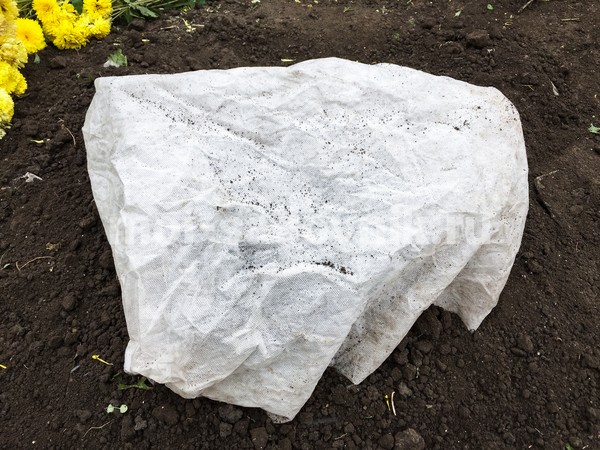 On a note! This method is used when trees or shrubs grow nearby, which will trap snow.
On a note! This method is used when trees or shrubs grow nearby, which will trap snow.
You can cover it in another way. We make mulch from spruce or pine branches in the form of a house. Snow will linger on them well, and the plant will perfectly tolerate winter frosts.
In the spring, the shelter is removed as soon as the snow melts, preventing the plant from heating up.
Video: wintering chrysanthemums in the Middle lane
Information about the preparation of chrysanthemums for winter in the Moscow region and the Middle zone from the Sadovy Mir canal.
Storage options
Before the soil freezes, we cut off the bushes, keeping the stems about 15 cm high, in order to identify the varieties. Then we select a more optimal type of storage of chrysanthemums in open soil.
If you decide to keep chrysanthemums in the winter without digging, in the open field, then there are a number of methods for this:
- The first method we will analyze is soil mulching. This term means covering the soil in order to retain moisture and various microelements in it. This is a kind of imitation of the natural state of the land, which has not been cultivated by man. The problem is that the soil around the plants is almost constantly covered with fallen leaves, grass, which guarantees a suitable requirement for bacteria to live. They carry out a very significant function - the production of nutrients. Thanks to them, the earth does not feel a lack of oxygen and moisture. This method is more suitable for species that tolerate cold and snowy winters. Plants should be spud with the arrival of the first frost. For this, humus, peat, sawdust are used. At especially low temperatures, chrysanthemums are covered with spruce branches or branches. Sprinkle everything on top with dry leaves.
- When in a region of winter with a stable change in temperature, then it is rational to use the method of shelter with the help of construction. Preliminary work must be started in the autumn - the bush is covered with bricks. The result is a "box" construction, and spruce branches are laid on top. Another material is also suitable, the main one, not to violate the main requirement - the air must circulate, due to which the structure will be ventilated. Excess moisture is detrimental to chrysanthemums.
- Digging a trench is also an option for preparing plants for winter.Preparation begins in the autumn, and even preferably in the summer season. To do this, dig a trench in the soil (50 cm deep), and the length does not matter. The main thing is that all the plants fit into it. A layer of sawdust / needles is poured at the bottom. With the onset of winter, when the first noticeable frosts occur, the chrysanthemum is dug up together with a lump of soil and placed in the trench in dense rows as much as possible. On top of the ditch, it is covered with planks, into which polyethylene or a similar material is placed. This is done to prevent excess water from entering the trench. In a similar way, chrysanthemums will perfectly endure the winter, but this method has one minor drawback - it will be somewhat difficult to observe the state of the flowers. However, there is also a pleasant distinctive feature - with the arrival of spring, green shoots will appear, and this happens quite early.
Wintering
There are 3 options for wintering chrysanthemums: in the open field, in the basement or indoors.
Wintering in the open field. This wintering method is suitable only for winter-hardy varieties belonging to the group of Korean chrysanthemums.
After preliminary pruning, the bushes must be spud from all sides.
It is very important when performing this process to avoid the formation of pits in which water can accumulate.
Many varieties of chrysanthemums successfully winter in the garden until spring under the snow without the construction of additional shelter, it will only be enough to huddle them. But if frosty winters with a small amount of snow are typical for your region, then for a successful wintering you need to build a simple shelter.
To arrange a shelter, bricks are placed on the sides of the bush, if there are several bushes, then a whole row can be laid out of them. A wide board, a sheet of slate or iron is placed on top, which it is desirable to press down with something heavy in order to exclude the possibility of being blown away by the wind. Thus, you have built a shelter that protects against water ingress and is well ventilated from the sides.
Many people use another method of sheltering plants for the winter. With the onset of stable frosty weather, the bushes are covered with coniferous spruce branches or, in its absence, with tree branches, which are then covered with leaves. For shelter, you can also use artificial materials, such as "Spunbond".
Wintering in the basement or cellar. This method of wintering is suitable for heat-loving chrysanthemums belonging to the Indian or multiflora groups; it is also used for especially valuable varieties in order to exclude the possibility of their loss.
With the onset of stable frosts, the cut bushes are dug out of the garden and, together with an earthen lump, are placed in boxes or pots, which are placed in a basement or cellar for further storage, where a low positive temperature is maintained throughout the winter.
Indoor wintering. This wintering method is used mainly for late-flowering varieties from the Indian and spherical groups, which do not have time to open their buds in open ground conditions.
At the onset of the first frost, these varieties are dug out of the garden, placed in containers of suitable size and transferred to a bright, cool room. Spherical chrysanthemums look especially beautiful in pots.
After the end of flowering, watering is reduced, the plants are cut off and for further wintering the pots with plants are placed in a place with a temperature of no higher than 5 degrees.
Many gardeners are discouraged by the need to harvest chrysanthemum roots for the winter. But after all, the same dahlias or gladioli, widespread in gardens, also require annual digging and storage at low temperatures, the more chrysanthemum planting material is stored much better than ever-rotting tubers.
Regardless of which storage method you choose, none of them will give a 100% guarantee of the safety of the roots until spring.Experienced flower growers use a combined wintering method to preserve the most valuable varieties, some of the bushes are covered and left in the open ground, some are dug up.
Your brownie.
Home wintering
If you decide not to risk it and move the chrysanthemums from the garden home for the winter, then it is extremely important to do it right.
A few rules:
- First of all, find a suitable container. Your chrysanthemum can winter in a pot, box, or container. In any case, choose the appropriate size. It should correspond to the size of the root, that is, it should be about the same, but not smaller and not much larger.
- The transplant should be carried out around the middle of autumn, that is, when the first frosts begin.
- Be careful. Carefully remove the bush along with the soil and move it to the pot. Do not forget to cut the shoot (as in front of the shelter), it should not stretch and grow. In addition, it is advisable to fertilize the soil so that in the cold season the plant can receive everything it needs.
- Find the right room. You can't just put the pot on the windowsill in the room! The optimum temperature for wintering is 3-7 degrees. In such conditions, the roots will be preserved, but the chrysanthemum will not grow (in winter, a dormant period should come, otherwise the biological rhythms will be disrupted and the plant will die). You can put the container in the cellar (basement) or on the balcony. If neither one nor the other is not present, put it in the refrigerator.
- There is no need to water the chrysanthemum. If it begins to dry, then moisten it, but minimally, otherwise it will rot.
- When spring comes, and the temperature more or less normalizes, you can take out the pots, remove the bushes with soil from them and carefully transplant. It is desirable to fertilize the soil. Be careful, try not to damage the roots, after wintering they are especially vulnerable.
Some useful tips for experienced gardeners and hobbyists:
- To increase the frost resistance of the chrysanthemum, it is advisable to plant it at the end of August. Then it will have time to take root by frost, and in winter the root system will harden and be stronger and more well-formed.
- If you have “favorites” whose death you cannot bear, then it is better to move them home. The rest of the bushes do not need to be replanted.
- In order for the plant to delight with flowers longer and survive more than one winter, the bush should be regularly divided (along with the roots).
Grow chrysanthemum at home
Chrysanthemums are very beautiful flowers, varied in flower structure and shades, which can decorate any room with beautiful round-shaped bushes. It should be noted that chrysanthemums live well at home, while not giving their owners much trouble in terms of content. You can put a pretty bush anywhere, be it a wide enough window sill, a balcony floor, or even a sufficiently lit room. If we talk about a country house, who will beautifully furnish the veranda and the entrance to the house with them, because they are not whimsical to warmth, they can perfectly tolerate a drop in temperature. The only problem will be excessively warm air, because these flowers do not like it when the room is warm, that is, above 20 degrees Celsius and when there is no regular ventilation.



